The Fugitive (1993 film)
9 /10 1 Votes
96% Rotten Tomatoes 88% Metacritic Genre Action, Adventure, Crime Film series The Fugitive film series Duration Language English | 7.8/10 IMDb 4/4 Roger Ebert Adapted from The Fugitive | |||||||||||||||||||||||||||||||||
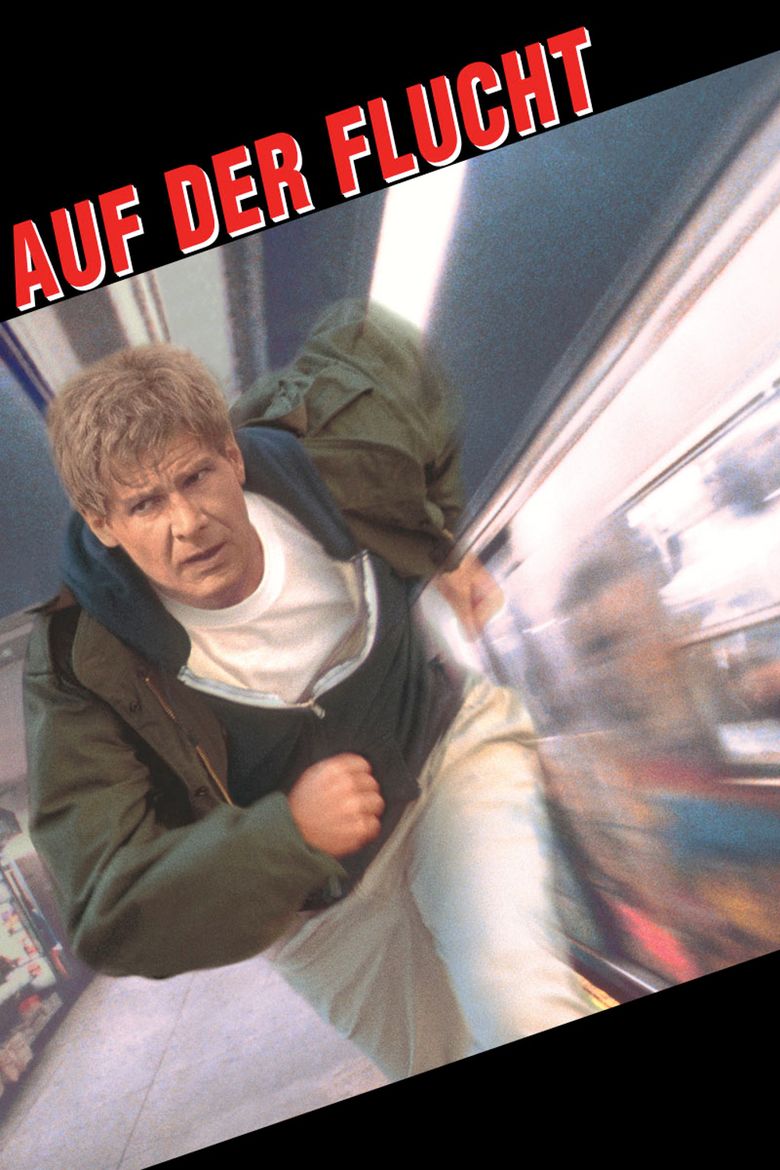 | ||||||||||||||||||||||||||||||||||
Release date August 6, 1993 (1993-08-06) Writer Cast (Dr. Kimble), (Samuel Gerard), (Helen Kimble), (Dr. Anne Eastman), Thomas Mills Wood (Newman), (Cosmo Renfro)Similar movies Taken 3 , Blackhat , Salt , The Incredible Hulk , Dead Man Walking , Point of No Return Tagline A murdered wife. A one-armed man. An obsessed detective. The chase begins. | ||||||||||||||||||||||||||||||||||
The fugitive 1993 official trailer 1 harrison ford tommy lee jones movie
The Fugitive is a 1993 American action-thriller film based on the 1960s television series of the same name created by Roy Huggins. It was directed by Andrew Davis and stars Harrison Ford and Tommy Lee Jones. After being wrongfully convicted for the murder of his wife, Dr. Richard Kimble (Ford) escapes from custody and sets out to prove his innocence while pursued by a team of U.S. Marshals led by Deputy Samuel Gerard (Jones).
Contents
- The fugitive 1993 official trailer 1 harrison ford tommy lee jones movie
- Plot
- Cast
- Casting
- Filming
- Music
- Home media
- Novelization
- Critical response
- Box office
- Accolades
- Spin off
- References
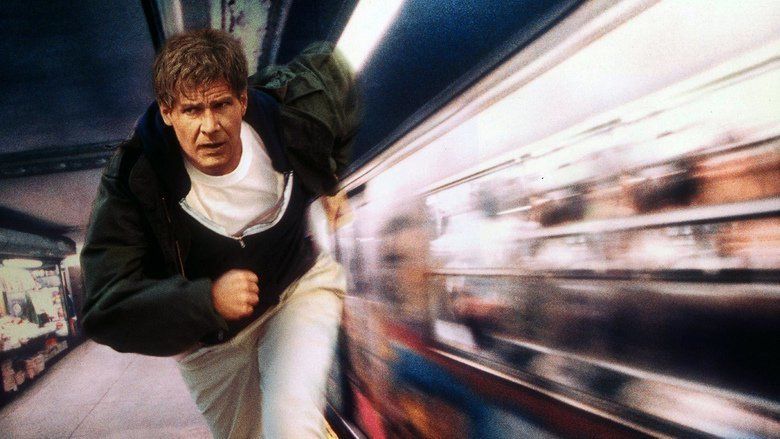
The Fugitive premiered in the United States on August 6, 1993, and was a major critical and commercial success. It was the third-highest-grossing film of 1993 domestically, with an estimated 44 million tickets sold in the US. It was nominated for seven Academy Awards including Best Picture; Jones won the Oscar for Best Supporting Actor. It was followed by a 1998 spin-off, U.S. Marshals, in which Jones reprised his role as Gerard.
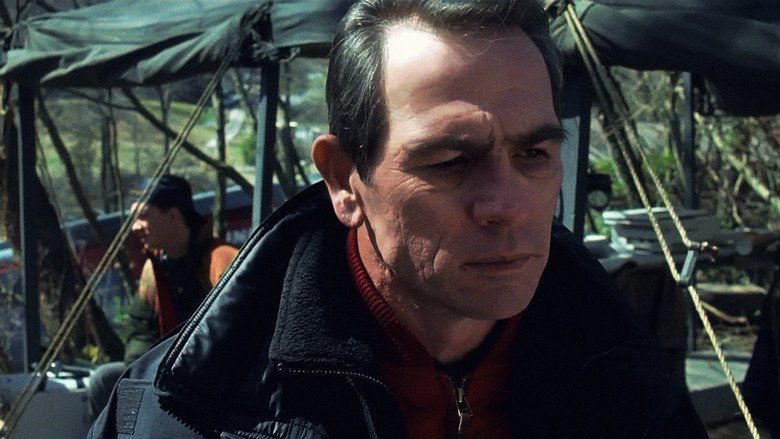
Plot
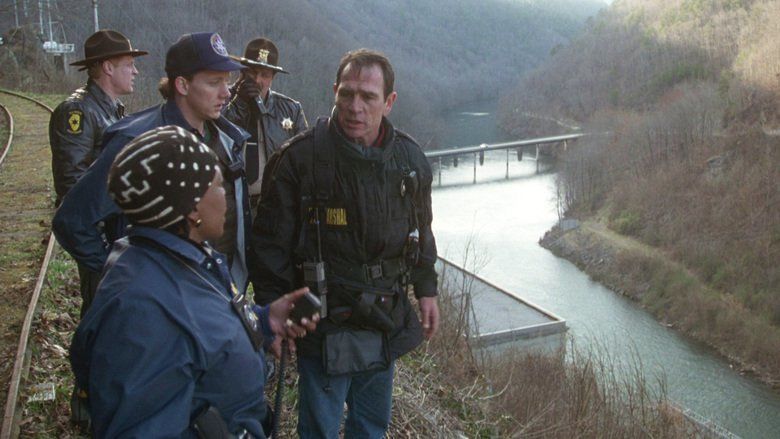
Dr. Richard Kimble, a prominent Chicago vascular surgeon, arrives home to find his wife Helen fatally wounded by a one-armed man. Kimble struggles with the killer but he escapes. The lack of evidence of a break-in, Helen's lucrative life insurance policy, and a misunderstood 9-1-1 call result in Kimble's conviction of first-degree murder. Being transported to death row by bus, his fellow prisoners attempt an escape. The pandemonium sends the bus down a ravine and into the path of an oncoming train. Kimble escapes the collision and flees. Deputy U.S. Marshal Samuel Gerard and his colleagues Renfro, Biggs, Newman and Poole arrive at the crash site and begin the search for Kimble. Kimble sneaks into a hospital to treat his wounds and alter his appearance. He eludes the authorities, but Gerard corners him at the edge of a storm drain over a dam. Kimble leaps into the raging water and escapes.
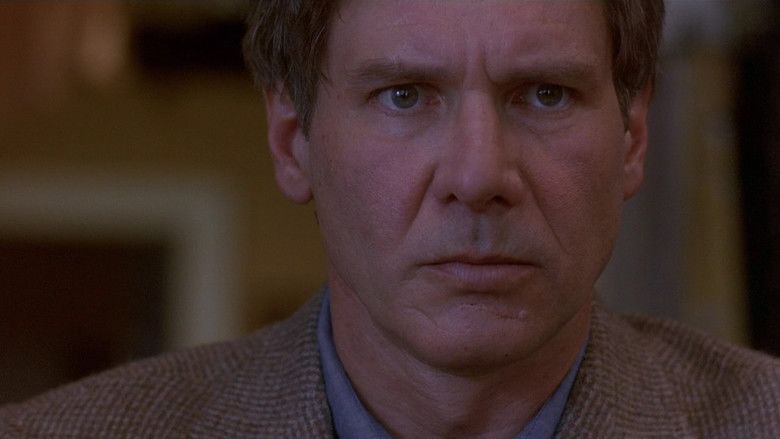
Kimble returns to Chicago to hunt for the murderer and acquires money from his friend and colleague Dr. Charles Nichols. Posing as a janitor, Kimble enters the local county hospital's prosthetic department to obtain a list of people who had their prosthetic arm repaired shortly after his wife's murder. Following a police lead confirming Kimble's recent whereabouts, Gerard speculates that Kimble is searching for the one-armed man. Kimble breaks into the residence of one of the people on the list, a former police officer named Fredrick Sykes. Kimble discovers that Sykes is the murderer and is employed by a pharmaceutical company, Devlin MacGregor, which is scheduled to release a new drug called Provasic. Kimble investigated the drug in the past and revealed that it caused liver damage, which would have prevented it from being approved by the FDA. He also deduces that Nichols, who is leading the drug's development, arranged a cover-up and ordered Sykes to kill him – his wife's death was incidental. Gerard follows Kimble's lead to Sykes' home and draws the same conclusion.
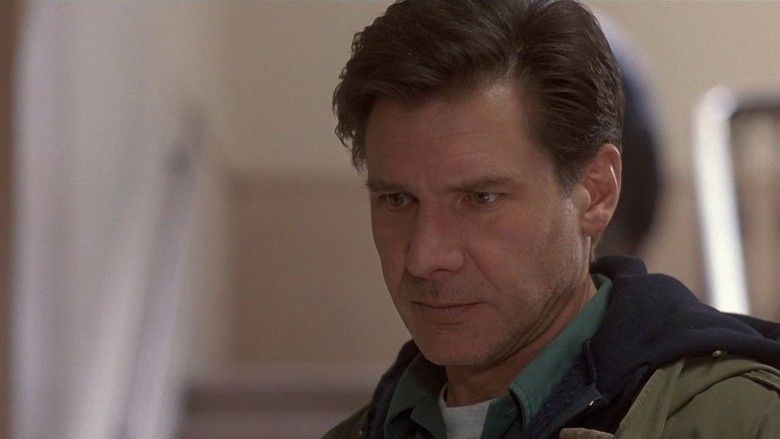
As Kimble takes an elevated train to confront Nichols at the drug's presentation in a hotel, Sykes appears and attacks him. In the struggle, Sykes shoots a transit cop before being subdued and handcuffed to a pole by Kimble. Kimble arrives at the pharmacon conference and interrupts Nichols's speech, accusing him of falsifying his medical research and orchestrating his wife's murder. They fight while being chased through the hotel by the marshals and police. Gerard calls out to Kimble that he knows about Nichols' conspiracy. Nichols knocks out Renfro and takes his gun and attempts to shoot Gerard, but Kimble attacks him from behind, knocking him unconscious. Kimble surrenders to Gerard, who escorts him out of the hotel. Nichols and Sykes are arrested. Kimble is exonerated and driven from the crime scene by Gerard.
Cast
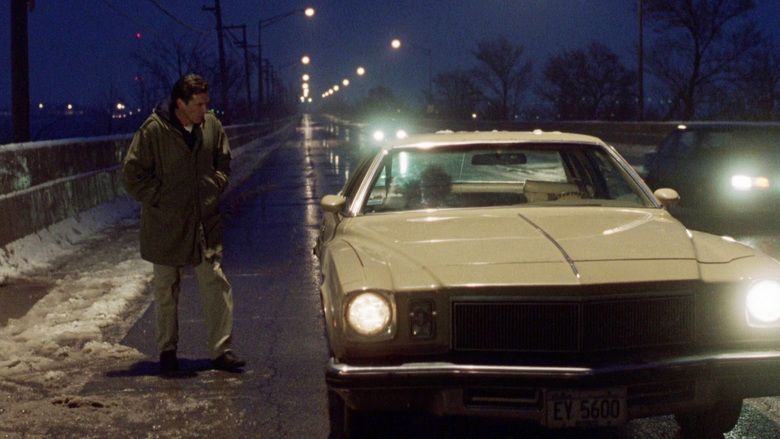
Casting

Harrison Ford was not originally cast for the role of Dr. Kimble. Instead, a number of actors were auditioned for the part, including Alec Baldwin, Nick Nolte, Kevin Costner, and Michael Douglas. Nolte in particular felt he was too old for the role despite only being a year older than Ford. Although the role of Gerard went to Tommy Lee Jones, Gene Hackman and Jon Voight were both considered for the role. The character of Dr. Nichols was recast for Jeroen Krabbé after the original actor who landed the role, Richard Jordan, fell ill with a brain tumour. Jordan subsequently died three weeks after the film's release.
Filming
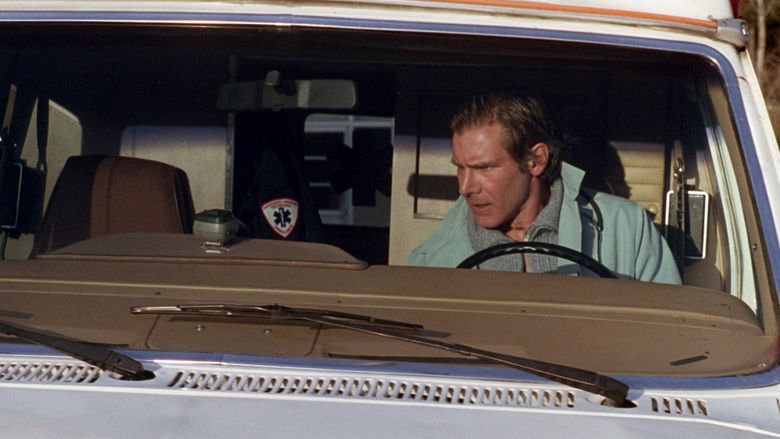
Filming locations for the motion picture included Cherokee, North Carolina; Tennessee; Chicago; and Dillsboro, North Carolina. Although almost half of the film is set in rural Illinois, a large portion of the principal filming was actually shot in Jackson County, North Carolina in the Great Smoky Mountains. The scene involving Kimble's prison transport bus and a freight train wreck was filmed along the Great Smoky Mountains Railroad just outside Dillsboro, North Carolina. Riders on the excursion railroad can still see the wreckage on the way out of the Dillsboro depot. The train crash cost $1 million to film. The train used during the filming was real, and was done in a single take. Scenes in the hospital after Kimble initially escapes were filmed at Harris Regional Hospital in Sylva, North Carolina. Cheoah Dam in Deals Gap was the location of the scene in which Kimble jumps from the dam.
The rest of the film was shot in Chicago, Illinois, including some of the dam scenes, which were filmed in the remains of the Chicago freight tunnels. The character Sykes lived in the historic Pullman neighborhood of Chicago. Harrison Ford used the pay phone in the Pullman Pub, at which point he climbs a ladder and runs down the roofline of the historic rowhouses. During the St. Patrick's Day Parade chase scene, Mayor Richard M. Daley and Illinois Attorney General Roland Burris are briefly shown as participants.
Music
The film's musical score was composed by James Newton Howard; Janet Maslin of The New York Times called the music "hugely effective". Elektra Records released an album featuring selections from the score on August 31, 1993. La-La Land Records later released a 2-disc, expanded and remastered edition of the score, featuring over an hour of previously unreleased music, tracks from the original soundtrack, and alternate cues.
Home media
Following its release in theaters, the Region 1 widescreen Pan and scan edition of the film was released on DVD in the United States on March 26, 1997. A Special Edition widescreen format of the film was released on June 5, 2001 along with an HD version on May 23, 2006. Concurrently, on September 8, 2009, a widescreen repackaged variant was also released. Special features for the DVD included behind-the-scenes documentaries, audio commentary by Tommy Lee Jones and director Andrew Davis, an introduction with the film's stars and creators, and the theatrical trailer.
A restored widescreen hi-definition Blu-ray version was released on September 26, 2006. Special features include commentary by Tommy Lee Jones and director Andrew Davis, two documentaries, and the theatrical trailer. On September 3, 2013, a 20th Anniversary Blu-ray edition for the film was released with a new digital transfer along with DTS-HD Master Audio tracking among other features.
Novelization
Jeanne Kalogridis wrote a mass-market paperback novelization of the film. She worked from the original screenplay, which characterizes a doctor unjustly accused of a crime, while being pursued relentlessly by federal authorities.
Critical response
The Fugitive received universal acclaim. Rotten Tomatoes rated a "Certified Fresh" 96% based on 70 critics averaging 7.9/10, stating: "Exhilarating and intense, this high-impact chase thriller is a model of taut and efficient formula filmmaking, and it features Harrison Ford at his frantic best." Metacritic averaging a score of 88 based on 11 reviews.
Desson Howe, writing in The Washington Post, called the film "A juggernaut of exaggeration, momentum and thrills — without a single lapse of subtlety — "Fugitive" is pure energy, a perfect orchestration of heroism, villainy, suspense and comic relief. Ford makes the perfect rider for a project like this, with his hangdog-handsome everyman presence. He's one of us — but one of us at his personal best. It's great fun to ride along with him." Left impressed, Rita Kempley also writing in The Washington Post, surmised how the filmed contained "Beautifully matched adversaries" figuring, "One represents the law, the other justice — and it's the increasingly intimate relationship between them that provides the tension. Otherwise, 'The Fugitive' would be little more than one long chase scene, albeit a scorchingly paced and innovative one." In a mixed to positive review, Marc Savlov of The Austin Chronicle wrote that "Director Davis valiantly tries to keep the breakneck, harried pace of an actual flight going throughout, and only occasionally drops the ball (the film's convoluted conspiracy ending is the first example to beat me about the face and neck just now — others will crop up after deadline, I'm sure)." Of the lead actor's performance he said, "Ford may be the closest thing we have these days to a Gary Cooper, but really, where's David Janssen when we really need him?" Owen Gleiberman of Entertainment Weekly said that the film was about "two chases, two suspense plots running on parallel — and finally convergent — tracks. Kimble and Gerard spend the entire film on opposite sides of the law. Before long, though, we realize we're rooting for both of them; they're both protagonists, united in brains, dedication, superior gamesmanship. The film's breathless momentum springs from their jaunty competitive urgency."
The film however was not without its detractors. A columnist writing under the pseudonym GA for Time Out viewed the film as "A glossy, formula chase movie with the requisite number of extravagant action sequences". The critic added, "Ford is up to par for the strenuous stuff, but falls short on the grief, anxiety and compassion, allowing Tommy Lee Jones to walk away with the show as the wisecracking marshal on Kimble's trail." In a formulaic fashion, columnist Ethan Ham writing for the Bright Lights Film Journal speculated that supporting actor Tommy Lee Jones' character was "much more disturbing than the inept police." Later explaining, "In Kimble's first encounter with Gerard, Kimble says, 'I didn't kill her!' Gerard responds, 'I don't care.'" In the Chicago Sun-Times, noted film critic Roger Ebert voiced his enthusiasm with the picture observing, "The device of the film is to keep Kimble only a few steps ahead of his pursuers. It is a dangerous strategy, and could lead to laughable close calls and near-misses, but Davis tells the story of the pursuit so clearly on the tactical level that we can always understand why Kimble is only so far ahead, and no further. As always, Davis uses locations not simply as the place where action occurs, but as part of the reason for the action." Rating the film with three stars, James Berardinelli of ReelViews professed, "Following the opening scenes, we're treated to over a half-hour of nonstop action as Gerard and his men track down Kimble. Directed and photographed with a flair, this part of the movie keeps viewers on the edges of their seats. Most importantly, when on the run, Kimble acts like an intelligent human being. Equally as refreshing, the lawmen are his match, not a bunch of uniformed dunces being run around in circles."
For the most part, satisfied with the quality of the motion picture, Jonathan Rosenbaum of the Chicago Reader said that "The mystery itself is fairly routine, but Jones's offbeat and streamlined performance as a proudly diffident investigator helps one overlook the mechanical crosscutting and various implausibilities, and director Andrew Davis does a better-than-average job with the action sequences." Leonard Klady writing in Variety exclaimed, "This is one film that doesn't stint on thrills and knows how to use them. It has a sympathetic lead, a stunning antagonist, state-of-the-art special effects, top-of-the-line craftsmanship and a taut screenplay that breathes life into familiar territory." Film critic Chris Hicks of the Deseret News accounted for the fact that the film "has holes in its plotting that are easy to pick apart and characters that are pretty thin, bolstered by the performances of seasoned vets who know how to lend heft to their roles." But in summary he stated, "the film is so stylish, so funny and so heart-stopping in its suspense that the audience simply doesn't care about flaws."
Box office
The Fugitive opened strongly at the U.S. box office, grossing $23,758,855 in its first weekend and holding the top spot for six weeks. It eventually went on to gross an estimated $183,875,760 in the U.S., and $185,000,000 in foreign revenue for a worldwide total of $368,875,760.
Accolades
The film was nominated and won several awards in 1993–94. Various film critics included the film on their lists of the top 10 best films for that year; including Roger Ebert of the Chicago Sun-Times who named it the fourth best film of 1993. The film is also listed by the American Film Institute as one of the 100 most thrilling American Films.
American Film Institute Lists
Spin-off
Jones returned as Gerard in a 1998 spin-off, U.S. Marshals. It also incorporates Gerard's team hunting an escaped fugitive, but does not involve Harrison Ford as Kimble or the events of the initial 1993 feature.
Also in 1998, a parody film Wrongfully Accused, based on The Fugitive, was developed with Leslie Nielsen portraying the principal character. Although the film spoofs many other motion pictures such as Mission Impossible and Titanic, the storyline revolves around Nielsen's character being framed for a murder, as he escapes from federal custody to seek out the real suspect behind the crime.
References
The Fugitive (1993 film) WikipediaThe Fugitive (1993 film) IMDbThe Fugitive (1993 film) Rotten TomatoesThe Fugitive (1993 film) Roger EbertThe Fugitive (1993 film) MetacriticThe Fugitive (1993 film) themoviedb.org
